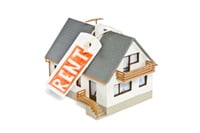 CMHC’s new rental mortgage rules have been around for few weeks now.
CMHC’s new rental mortgage rules have been around for few weeks now.
Here are some of the most common questions we’ve seen people ask about them.
1. Why are property taxes and heat not factored into debt service calculations on properties that generate rent?
Answer: When a property generates rent and it is owner-occupied or the subject property of the application, CMHC permits only 50% of that rent to be added to the borrower’s income for qualification purposes. This is referred to as a “50% add-back.”
When calculating total debt service, CMHC does not require property taxes and heat to be explicitly included in the formula. That’s because the 50% add-back method already discounts the rent to take expenses into account.
2. How can you prove rental income for non-owner occupied rentals owned less than two years?
Answer: CMHC requires a 2-year history to establish net rental income on non-owner occupied rentals.
When a rental has been owned for less than two years, CMHC permits “the current rent to be used for qualifying purposes if the Approved Lender is satisfied that the rental income is stable.” To document this rental income, CMHC says lenders can use:
- Audited or review engagement financial statements prepared by a practicing accountant
- Signed leases; or,
- Appraisals containing the reasonable rent rate, and expenses for the rental unit.
3. Can you borrow the 20% down payment on an insured rental mortgage?
Answer: CMHC says it generally permits borrowed down payments for non-owner occupied rental properties as follows:
- The down payment must be borrowed against proven assets.
- The proven assets must be “financial in nature, unencumbered by debt, and readily convertible to cash.”
That definition includes lines of credit (LOC) if they are secured by another property the borrower owns. Naturally, any LOC payments must also be factored into the borrower’s debt ratio calculations.
Conversely, borrowing against non-financial assets is not an acceptable way to meet CMHC’s minimum down payment requirements for non-owner occupied properties.
****************
 Don’t forget that lenders have their own policies as well, and they are sometimes more stringent than those above.
Don’t forget that lenders have their own policies as well, and they are sometimes more stringent than those above.
For example, not all lenders will let you borrow your down payment on a non-owner occupied rental property.
Suffice it to say, as of April 19 there are a slew of new rental guidelines to be aware of. If you have any questions, you can save a little effort by contacting a mortgage planner. Try to find one that specializes in rental financing to make life easier.
___________________________________________________
Sidebar: For those who haven’t seen them yet, here are CMHC’s debt ratio guidelines for rental properties.







So with the borrowed 20% payment how often are clients able to get beyond 3 properties? Could you do a post about financing for those with 3+ properties and 30+ properties?
Who am I to provide editorial suggestions, but I’ve been checking back waiting for your commentary on the biggest story to hit the broker industry in recent history – BMO’s fraud case yesterday. Hoping you’ll offer some insight.
Hi William,
We’ve been trying to collect some details before we post. Unfortunately BMO isn’t commenting given the criminal investigations.
This is a big story for the mortgage industry in general, but I can’t say it’s the biggest story for the mortgage broker industry at this point. No one has any idea how much BMO’s own employees were complicit, versus laywers, brokers, and other parties.
Cheers,
Rob
Hi Chris, Thanks for the note. It’s a great idea and, time permitting, we’ll look at doing a piece on it. Cheers, – Rob
mortgage fraud is more of a banking concern and a criminal police matter. Its still early in the investigation but the direct insiders on this kind of fraud are usually bank employees, appraisers and RE lawyers and not mortgage brokers since all the information a mortgage broker feeds to the FI is fully reviewed by the FI’s own underwriting department and that is where the buck stops.
I know for a fact BMO is not the only FI to be taken by this very fraud and as a banker, have known about it since 2007.
As a unwritten rule, Joe public rarely hears about bank fraud because it undermines the banks reputation to ever suggest that your money is not safe with them.
I second Chris’s post and would be interested in financing 5+ properties.
Me too to second the post of Chris. and Thank you Robert in advance.
Jason Liu
Thanks for the comments, and fair enough about the fact that bank employees, appraisers, lawyers, etc are all involved too. But I think it’s naive to say that some bad-apple brokers are not part of the scheme–there’s a pretty big incentive in the way of extra commissions and kickbacks for facilitating this kind of scheme and by looking the other way when a big client is sending you file after file.
These new mortgage rules are costing me a house. Three years ago, I bought a house in East Hamilton with 0% down, 40 yr am with Wells Fargo as the mortgagee. After about 2 years, we moved and because the mortage penalty was so high couldn’t sell it so opted to rent it out.
Now, there’s not enough equity in it, Wells is renewing but at a ridiculously high interest rate so my only two options were a) refinance or b) sell. Refinancing became impossible because of the new rules and there’s not a lot of equity in there to sell. So, this should be interesting to say the least…
I would also be interested in reading an article about getting financing for investors with 3 plus properties.
Thanks, Jennifer